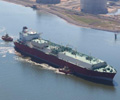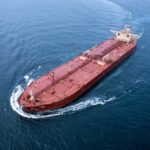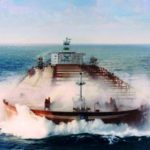
LNG and biofuels are a quick solution to drive GHG emissions reductions for shipping, with LNG potentially capable of accounting for as much as 30% of the global bunker fuel mix by 2030, Sing Fuels managing director Sanket Sudhakar Naik said in an interview.
The International Maritime Organization has given a “very clear mandate” to the industry, Naik told S&P Global Commodity Insights.
Member states of the IMO, a UN agency responsible for shipping safety and security, aim to reduce life cycle greenhouse gas emissions from international shipping by 20%-30% by 2030 and 70%-80% by 2040, compared to with emissions levels in 2008, before reaching net-zero emissions near 2050.
Among the environmentally friendly fuels available today, the LNG ecosystem is already well established, and the fuel also offers a long-term energy transition pathway in the form of bio-LNG or synthetic LNG as alternative fuels such as hydrogen, ammonia and methanol. growing, said Naik.
The LNG market faced unprecedented volatility in 2022, when Russia invaded Ukraine, and prices surged to record highs amid limited availability. However, global LNG prices have fallen since then, prompting many shipowners to return to using the fuel, he said.
Platts, part of Commodity Insights, valued JKM, the benchmark price for LNG cargoes shipped to Northeast Asia, for February at $13.275/MMBtu on Jan. 10, down 24.5 cents/MMBtu from Jan. 9. LNG bunker fuel in Singapore was assessed at $794.30/mt on Jan 10 more or less stable compared to $788.32/mt on Jan 1. March 10, 2024 but down from a peak of $3,627,624/mt on March 7, 2022, following Russia’s invasion of Ukraine.
According to the latest data from DNV’s Alternative Fuels Insights (AFI) platform released last week, the number of LNG vessel orders placed in 2024 is 264, more than double from 130 in 2023.
While LNG as a marine fuel offers many benefits, fuel storage presents a bit of a challenge, says Naik. “To burn LNG on a dual-fuel ship, different tanks are required, which are more expensive than conventional fossil fuels,” he continued.
Among alternative fuels, biofuel is an attractive fuel because it is easy to use, and its price is competitive, said Naik.
While economic factors have always played an important role in shipowners’ fuel choices, there is increasing awareness of the urgency and need to switch from traditional fuels to more environmentally friendly fuels, said Naik.
“Despite industry concerns regarding the toxicity of ammonia and accelerated development of ammonia-powered engines, we are very positive about the potential of ammonia as a marine fuel due to its ready availability and storage infrastructure,” said Naik.
“So, if we talk about 2050, I see most ships using LNG fuel, followed by ammonia,” added Naik.
Sing Fuels set up an LNG trading desk several years ago, but has no plans to become a physical supplier of LNG or other marine fuels, according to Naik. “We want to go beyond that ecosystem.”
“The plan includes establishing joint ventures with companies that produce biofuels – palm oil and other raw materials – and some of these partnerships are expected to materialize as early as 2025,” continued Naik.
Drive future growth
Global bunker fuel sales are expected to grow 3%-5% year-on-year, with the share of alternative fuels increasing given stricter environmental regulations in global shipping, Naik said.
Sing Fuels, for its part, also saw its sales align with the rule change. Before the IMO global sulfur limit regulation of 0.5% was implemented in January 2020, Sing Fuels product sales consisted of 90% HSFO. After 2020, with the increasing adoption of LSMGO, LSFO and other alternatives, HSFO now accounts for only 20% of the company’s product sales.
“We don’t want to be on the down side of this industry. “Companies also want to be lean and fast in capturing every new opportunity,” said Naik.
The company has diversified into base oils, petrochemicals and lubricants for automotive and industrial purposes.
Starting from Singapore, Sing Fuels has expanded geographically with offices located in America, London, Greece and Dubai. It operates in more than 350 ports globally.
Going forward, India will certainly be a focus area for the company, Naik said. Strengthening infrastructure, potential development of new transshipment ports and other initiatives under the Sagar Mala project to improve the country’s logistics sector are positive for improving India’s bunkering prospects, he said.
Apart from India, Sing Fuels also wants to expand its trading operations in Europe and the Asia Pacific region including in Shanghai, China by 2025, Naik shared.
“As a trading company, our core strength is understanding credit. In addition to traditional customer information, we also assess current market conditions for that customer and domain,” he said.
“The complexities associated with making credit decisions typically increase costs. “However, detailed examination is essential to avoid counterparty risks and wrong decision making,” said Naik.
He highlighted digitalization as an important tool to aid transparency and efficiency in operations and noted that the company’s 3.0 vision includes its commitment to sustainability, technological innovation and strategic expansion.
The company is also building an Energy Transition-as-a-Service model, which is an integrated, asset-backed approach to decarbonizing maritime operations.
Sing Fuels is also exploring investments in carbon management services including carbon trading, carbon compliance, facilitation of carbon credit creation and carbon contracts to support customers in their sustainability efforts, Naik added.
Source: Platts




